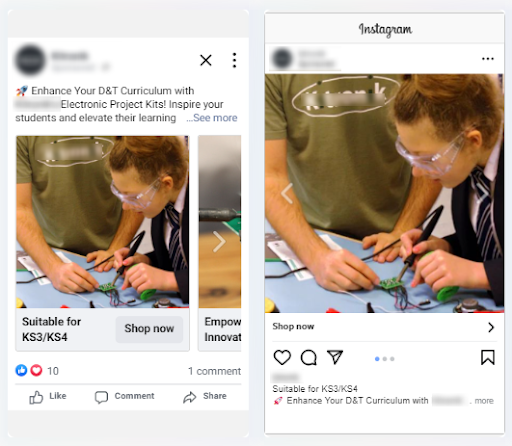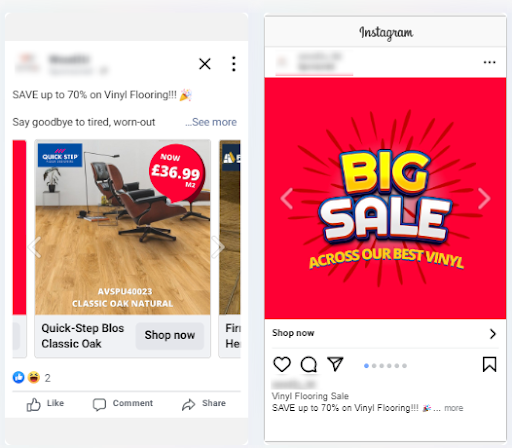Are you struggling to convert users through your paid marketing activities? You might need to revisit your paid marketing strategy to ensure that your campaigns resonate with users at every stage of the buyer journey (if applicable to your business).
From generating brand awareness with Google’s Demand Gen to ensuring that you’re directing users to a relevant and engaging landing page that will convert, there are many ways that your paid advertising actions can engage users. Continue reading to discover how to capture attention, ignite interest, spark desire and drive action to maximise your campaign’s effectiveness.
To fully understand consumer behaviour in paid advertising, we first need to explain the building blocks of consumer behaviour – the AIDA model. The AIDA model is a consumer behaviour model that outlines the stages that a consumer goes through when purchasing a product or service. The model consists of awareness, interest, desire and action.
Awareness: This is the user’s first point of contact with your product or services. At this stage, the goal is to grab the consumer’s attention and make them aware of what you have to offer through various marketing channels.
Interest: Once you’ve got the user’s attention, you can look to further develop their interest by making them want to learn more.
Desire: In this stage, you know that the user is interested in a product or service, the goal is to now create a need for the product or service. This is a good opportunity to showcase the unique benefits of the product or service to show how it can solve a problem, satisfy a want or improve the consumer’s life.
Action: Now that the users know what they want, you need to encourage them to make a purchase from your website. This can be done by using persuasive language such as ‘buy now’.
To reach a high volume of new users who may be in the market for what you have to offer, consider the following strategies:
Social Media Marketing: Use visual platforms like Facebook and Instagram to generate interest and awareness of your business. Try to promote your business values and ethos, as well as your products or services.
Keyword Targeting: Complete thorough keyword research and look to focus on not only popular keywords with high search frequency, but also consider long-tail search queries or questions. When first setting up keyword-targeted ads, use the broad keyword match to pick up misspellings, synonyms and more.
Display & Video Ads: Use a strong visual medium to get your website in front of users who are in the market for your business’s offerings. Ensure that your ads are available in multiple formats to ensure that your ad can show in multiple placements or channels.
Audience Targeting: Utilise your advertising platform’s Audience and Placements settings, along with Customer Lists (for lookalike audiences) to reach the right audience or demographic. For example, as a flooring business, you could create an awareness campaign with an in-market audience of ‘Home & Garden’.
We have recently implemented a successful Demand Gen campaign (via YouTube Ads) for a business in the horticulture and garden planting industry. This campaign has seen a significant number of video views and clicks at a low cost per click (CPC), highlighting the positive impact that Demand Gen campaigns can have on brand awareness.
The key to generating interest through paid channels is by building trust, authority and relationships with users. After all, users aren’t going to consider purchasing from a business that they don’t trust. To garner interest in your brand, consider the following strategies:
Remarketing Campaigns: Use retargeting adsto reach users who have previously visited your website or interacted with your business.
Audience Targeting: Use targeted advertising to reach specific demographics or interests that align with your product or service.
Paid Search Campaigns: Create search campaigns that use terms that are relevant, but have high search volume, with branded modifiers to capture the attention of the audience.
Lifestyle Imagery: Rather than focusing purely on products or service details, try to inspire potential customers through positive lifestyle imagery featuring products being used or enjoyed. The example that we’ve added below shows how one of our clients has used lifestyle imagery in their ads.

The desire stage of the consumer journey is much easier to encourage users to make a purchase as they’re actively looking for something in particular. Consider the following strategies to reach users in the desire stage:
Landing Pages: Create dedicated landing pages, or link directly to product pages, to showcase the unique selling points of your product or service. Ensure that the copy on the page is accurately reflected in your ad copy to create a desire for what you’re offering.
Reviews: Ensure testimonials or reviews are available to build credibility and trust with potential customers.
Promotions: Offer limited-time promotions or exclusive deals to create a sense of urgency.
The image that we’ve added below shows one of our clients ads that used a combination of promotions and discounted pricing imagery, along with a time-limited offer to encourage potential customers to move to the next stage of the funnel. This campaign saw a 15% uplift compared to non-promotional advertising.

The final stage of the consumer journey is the most effective at converting users into customers. Now that the user knows why they should take an action from your business, the only thing that is stopping them is checkout issues. When targeting users in the action stage, consider the following strategies:
Include a clear and direct call-to-action in your ads, such as ‘Shop Now’ or ‘Sign Up Today’.
Ensure that users land on a page that directs them to take an action.
Make it easy for users to convert by ensuring that the checkout process is streamlined. Speak to our CRO team for more information on optimising the checkout process.
Track and analyse conversion rates to optimise your ad campaigns for better results.
There are a number of different key performance indicators (KPIs) that you can track to measure the effectiveness of your paid advertising strategies. Here are the key metrics that we recommend you track for each stage of the customer journey:
Attention: To give you an indication of how successful the campaign is at capturing the attention of your target audience, track metrics such as website traffic, social media engagement and impressions.
Interest: Interest can be measured through various engagement metrics like click-through rates and time spent on the website to see how interested consumers are in learning more about the brand or product. The higher the engagement rate, the more interested in your product or service that the user is.
Desire & Action: These stages can be measured using metrics such as lead generation, conversion rates and conversions. This stage is crucial as it shows the effectiveness of the paid advertising strategy in driving conversions and ultimately, return on investment.
Although paid advertising is a fantastic way to ensure your ads are seen at the most effective points in the buyer journey, it’s important to consider the following challenges that may arise:
Ad Fatigue: This occurs when consumers are exposed to the same ad multiple times, leading to a decrease in its effectiveness as consumers may become disinterested in the product or service being advertised.
Ad Blocking: More and more people have ad-blocking software to filter out ads, reducing the reach and impact of paid advertising campaigns.
Deceptive Advertising: It’s important to ensure that all marketing is honest and as accurate as possible. If a user has previously seen that a product that they’re interested in was £10 on your site two weeks ago but is being advertised at 50% off, but is still £10, they may lose trust in your business.
Misuse of Personal Data: It’s important to always be mindful of data protection when advertising to users. If you want to target users, use first-party data that you have already collected from your audience.
